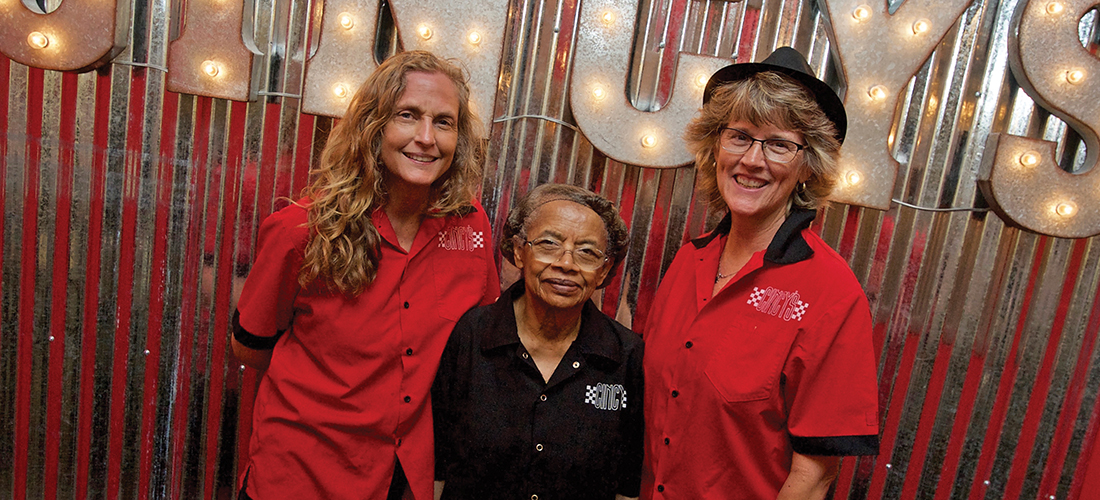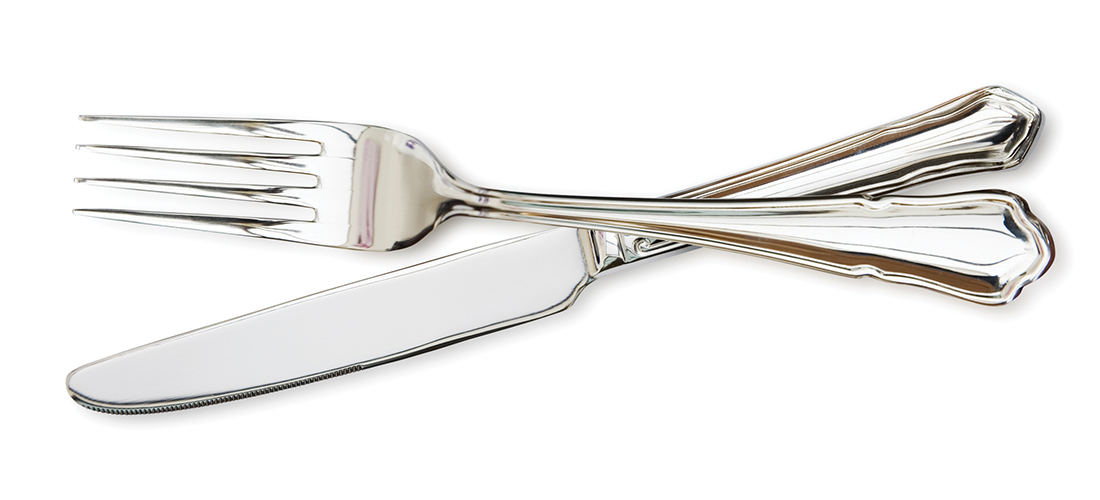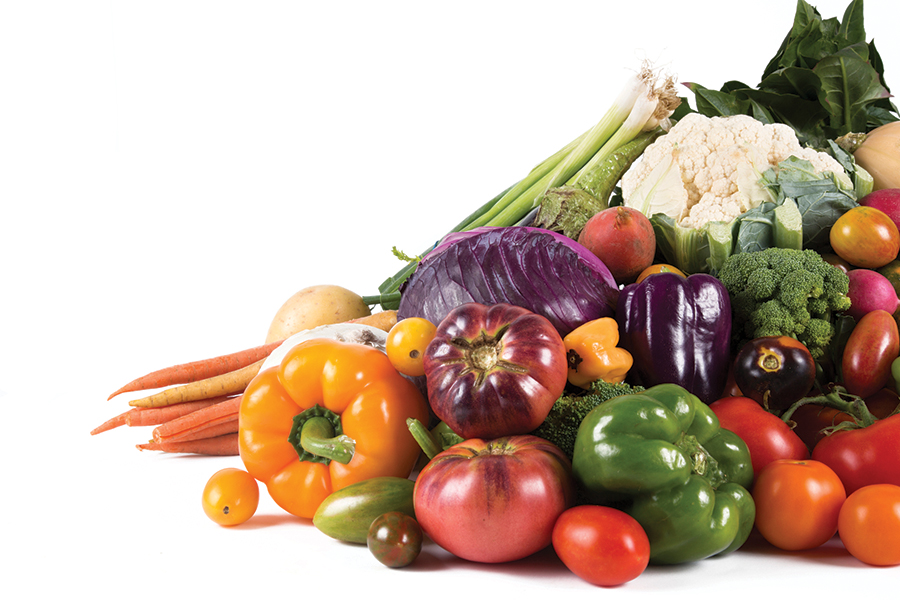Gate City Journal
The Little Restaurant that Could
In spite of its surroundings in a construction zone, Cincy’s Café carries on and soothes the soul with great cooking
By Cynthia Adams
It’s 10 a.m. at Cincy’s Café — at the best of times a place that is tucked out of sight on the street level of the historic Dixie building facing February One Place. The building itself once housed the Dixie Fire Insurance Company. Now, the only fire here comes from the Cincinnati-style chili, the café’s namesake dish. If you haven’t tried it, this toothsome, complex and oh-so-satisfying delight is not really all that spicy. But it’s definitely addictive, more closely resembling Greek spaghetti sauce than Southwestern chili, with bursts of allspice, a hint clove and subtle notes of chocolate. And, surprisingly, it’s served on a bed of spaghetti.
Only a couple of years ago, a hair salon was next door and the street was busy with foot and car traffic. But for over a year now, Cincy’s has been largely concealed by a forbidding construction zone. Outside, two orange scissor lifts are hoisting workers who are repointing brick on the side of the six-story building that has been Cincy’s home for decades. Two parking decks underway and a future hotel encircle the area.
For the faithful, and there are quite a few, there is only a narrow pathway open from Elm Street to the restaurant, flanked with orange construction tape.
February One Place remains closed except to foot traffic into Cincy’s — now looking more like a-behind-the-ropes setting for a Prohibition-era Speakeasy than a café.
Despite the commotion outside, the eatery continues to be a popular and much-loved restaurant, where lawyers and business types in tailored suits quite literally rub shoulders in close confines with construction and office workers. Inside, Cincy’s owner Bonnie Kays is all business, clad in her no-nonsense black work uniform as she prepares for the lunch crowd, which can, despite all the obstacles, still be quite a crowd of regulars. A real dynamo with graying hair tucked beneath a black fedora, Kays greets me, as she does her customers, with blue eyes and dimples that crinkle into a smile. She is cracking open her first energy drink of the day. (“It’s by V-8,” she says with a grin. “Very low sugar. Healthy, I hope.”)
With only four or five hours’ nightly sleep, Kays is in a serious sleep deficit. She chugs the energy drink down and smiles.
Go juice.
“It’s funny,” she says. “Being in the business you can find yourself going all day without eating.”
The eatery she and Cindi Long purchased in 1996 from the original owner, Linda Schwoeppe, first opened in 1986.
Cincy’s is entering 33 years of operation, making it one of two of the oldest surviving downtown lunch spots (the other one I’ll get to below). Lunch crowd mainstays like the Southeastern Soda Shop and The Mantelworks, along with Woolworths, are long closed. Only the Acropolis on Eugene Street is older and still operational, having opened in 1967. Like Cincy’s, it has battled with construction and parking losses as development has encroached.
Despite all odds, the low-profile Cincy’s (its name a riff on the aforementioned Cincinnati-style chili, layered with Greek-style seasonings) endures. The distinctive chili with its aromatic come-hither aroma accounts for at least half of daily sales. Half turkey, half ground beef, is offered, like traditional Cincinnati chili in five variations. Two-way is just chili and spaghetti noodles. Three-way involves an additional topping of cheeses. The “five-way” chili translates into spaghetti, chili, chopped onion, and kidney beans. And don’t write off the vegetarian offerings without trying them. One nonvegetarian foodie friend insists that the veggie version of Cincy’s chili is superior to the meated variety and it’s definitely spicier.
The chili recipe is a tribute dish, one Schwoeppe remembered from her native Ohio. The former jeans and sportswear designer came from the Buckeye State to Greensboro to work at VF Corporation, while privately nursing a dream of starting a restaurant that served her very own chili recipe. Over two years Schwoeppe perfected her culinary specialty. When she felt it was ready to debut, she opened a restaurant in the Quaker Village Shopping Center, serving lunch and dinner, and eventually hired Kays to manage it. Meanwhile, Schwoeppe expanded, opening a lunch-only restaurant at the current location downtown.
After 10 years, Schwoeppe sold the Guilford College location, and offered to sell the downtown Cincy’s to Kays and another employee, Cindi Long. They promised not to screw it up, Kays laughs.
Kays eventually bought out Long, who remains a colleague and close friend. Employee Minnie Crowder, now in her 80s, came to work at Cincy’s in 1992 — after 26 years working at the McCrory Drugstore counter located at Four Seasons Mall. “I bet she served many a grilled cheese to me there,” muses Kays.
Kays admits that Crowder is her rock. A woman who has worked since she can recall, she adds.
Both Crowder and Long offer a ready smile and kind word to customers, and know many regulars by name. “Cindi and Minnie are due much credit for Cincy’s success,” says Kays.
But it’s Kays’ creativity in the kitchen that really distinguishes this hidden gem. Nothing on the menu is same-old, same-old. Everything is served with care and flair. For instance, Kays offers five varieties of veggie burgers, one with grilled onions topped with a sauce savory with horseradish and rich with cream. Her 100-percent Angus burgers come six different ways, with a spicy, raging Cajun cooled down with ranch dressing and cheese. Add seven types of salads, an eclectic roster of tantalizing sandwiches plus chocolate-brownie pie or cobbler for dessert and it’s no surprise that Kays’ “long-term, true-blue customers” are willing to navigate past the cranes, sawhorses and a street closure to come eat in this woman-powered cafe. At least half of the true-blue have continued, even now that dedicated parking has been apportioned for a future city parking deck. Kays doesn’t object to more parking. “We need it,” she affirms. But it is part of a one-two punch, as construction continues making customer access difficult.
Like the regulars who fill those seats, Kays commitment to the job is also true-blue. She has been in the business since she got her first work permit. “My first job was waitressing at Heckle’s Big Steer out on Mt. Hope Church Road, a little restaurant that is now a truck stop, when I was 15. Once I started making money, I paid for my first car, a blue Pinto.” She was still a junior at Southeastern High School, and buying preppy chinos and jackets from the Limited with her own hard-earned waitressing money.
If there was anything she liked better than being in the bustle of a kitchen, it was self-sufficiency. Kays soon bought a silver Mercury Capri . . . again with her earnings. “I moved out into an apartment at Sans Souci as soon as I graduated.”
Her first true management job was at age 20 working in the cafeteria at Sears, where “I learned everything from accounting up.” She took it upon herself to go in at 5 a.m. (“I learned my work ethic from my Daddy”) and work with the chef.
“The first time I made a biscuit, I had to make 1,000. It was a huge kitchen, and I learned how to feed the masses.”
Feeding the masses is something Kays does, even when it doesn’t net her a dime. One of her friends, Sally Randall, began a nonprofit charity Re4Him, to help those in need.
“Sally helps people get off the street. I started helping her and feeding the homeless, so now, I do it every week except the third week of the month when Domino’s does it.” The group, whose name is a compression of “Him” and a short reference to four words (to the fourth power), each starting with “re” — renew, restore, refocus, repurpose — sets up tables in front of the Greene Street parking deck and feeds anywhere from 175–200 people after hours. One day a week, Randall also works at Cincy’s.
Kays donates some of the food distributed. “The hunger problem is bad,” she says.
So, she counts herself lucky, and has a determination to survive a worrying transitional period.
These days, Cincy’s proprietor is counting on Kays’ catering business (“The spring furniture market saved us,” she says quietly) to stay afloat through a turbulent year of downtown construction, which eliminated a parking lot and on-street parking, and has put a serious dent into her usual traffic.
Before construction took the parking behind them and eventually closed off February One off completely, the restaurant was having a boom period — feeding 120 during lunch in 2017. Now, they are doing well to serve half that many.
“For the period before construction, things were going pretty smoothly. We were kicking it with record-breaking sales . . . making double chili batches. The best it had ever done. Even after Christmas, we didn’t see a lull . . . then they started construction.”
Adding to the headaches, the restaurant flooded last July due to a construction snafu — and for a heartbeat the entire Dixie building was condemned and evacuated. The next day, Cincy’s was back in business.
As their 33rd year of operation begins, the menu is being updated and tweaked. Kays says their burgers, veggie burgers, hot dogs and sandwiches are well-followed, and not that much has changed in its history since she became the owner. Cincy’s homemade soups are widely reviewed online by several hundred fans. The chili must remain as is.
“Our staff and customers are the reason for not forgetting our chili by any means,” Kays allows.
Comfort food for the true-blue. OH
Cynthia Adams is a true-blue regular at Cincy’s and a contributing editor to O.Henry.















